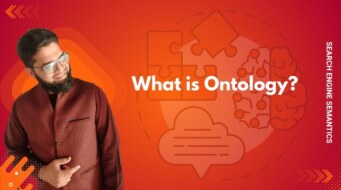An Entity Graph is a data structure that visually and mathematically maps the relationships between entities—distinct concepts, terms, or subjects—extracted from various resources like web pages, images, videos, or documents. It’s a foundational concept in semantic search, knowledge representation, and AI-powered information retrieval systems.
This concept shifts the focus from link-dependent authority signals to entity connections, semantic relevance, and search engine trust, placing greater value on factual accuracy and consistency across content ecosystems.
Components of an Entity Graph
Understanding the basic building blocks of an entity graph is essential for grasping how it models connections:
Nodes (Entities)
- Each node represents a unique entity, such as “Apple,” “iPhone,” or “Steve Jobs.”
- Entities can be extracted directly (e.g., named in text) or inferred using NLP techniques.
- Nodes are essentially concept holders in the graph.
Edges (Relationships)
- Edges connect two nodes to indicate a relationship or co-occurrence.
- A relationship is established when two entities co-occur more often than statistically expected.
Co-occurrence Formula:

Co-occurrence Formula
- freq(A,B) = how often A and B appear together
- N = total number of documents
- k = threshold constant (k > 1)
Edge Weights and Direction
Weight:
The strength of the relationship is measured using Pointwise Mutual Information (PMI):

Pointwise Mutual Information (PMI)
- A higher PMI means stronger entity association.
- If entities are independent, the weight becomes zero → no edge is formed.
Direction:
Directed edges show asymmetric relationships.
Example:
“Omri Casspi” → “NBA”: Casspi is associated with NBA, but “NBA” doesn’t always refer to Casspi. Hence, a one-way relationship exists.
Applications of Entity Graphs
Entity graphs play a pivotal role in modern SEO, semantic search, and AI systems:
| Use Case | Description |
|---|---|
| Central Entity Identification | Helps identify the most relevant entities in a piece of content. |
| Navigation & Recommendations | Suggests related topics, improving content discovery and UX. |
| Knowledge Representation | Forms the basis for systems like Google’s Knowledge Graph or Bing Satori. |
| Content Generation | Used in NLP to generate articles around interconnected concepts. |
Filtered & Second Entity Graphs
To refine relevance further, two stages of filtration are used:
Filtered Entity Graph:
- Non-relevant nodes (entities not in the scope of analysis) are removed.
- Keeps only those that relate to the candidate content set.
Second Entity Graph:
- From the filtered graph, nodes with no connections or no outgoing edges are removed.
- The result: a core graph of central, meaningful entities.
This two-step refinement ensures only contextually relevant entities remain for semantic analysis or content enhancement.
Why Entity Graphs Matter in SEO
Entity graphs enhance Google’s ability to understand semantic relationships. They bridge the gap between keywords and concepts, improving topical relevance.
Using structured entities in content helps build topical authority and improves contextual visibility in SERPs. They allow search engines to “think” more like humans, understanding the meaning, not just the text.
Final Thoughts
An Entity Graph is more than a technical structure—it’s a semantic blueprint for modern search and content strategies. It helps systems understand how ideas and concepts are related, enabling better content suggestions, richer search results, and smarter user interactions. For SEO professionals and content creators, understanding entity graphs can lead to more meaningful content design, improved indexing, and higher topical authority.
Want to Go Deeper into SEO?
Explore more from my SEO knowledge base:
▪️ SEO & Content Marketing Hub — Learn how content builds authority and visibility
▪️ Search Engine Semantics Hub — A resource on entities, meaning, and search intent
▪️ Join My SEO Academy — Step-by-step guidance for beginners to advanced learners
Whether you’re learning, growing, or scaling, you’ll find everything you need to build real SEO skills.
Feeling stuck with your SEO strategy?
If you’re unclear on next steps, I’m offering a free one-on-one audit session to help and let’s get you moving forward.





Leave a comment